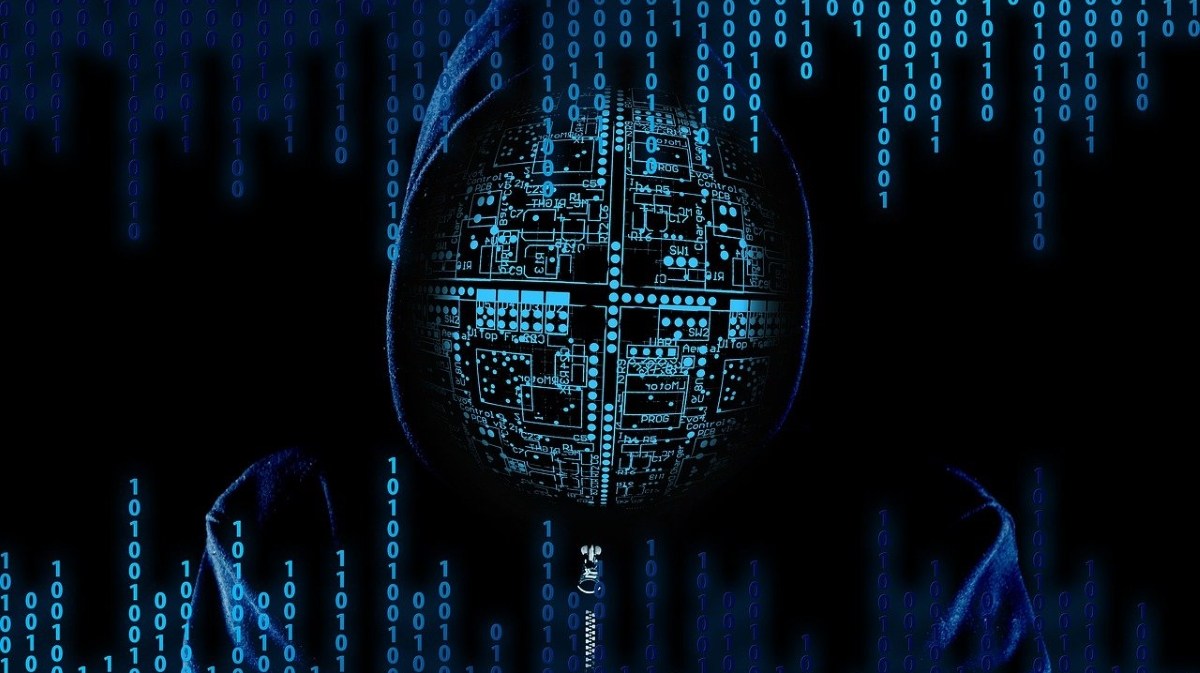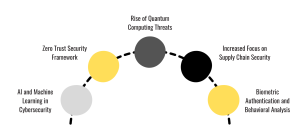Landscape of Cybersecurity: Trends in 2024
Introduction In an era defined by rapid technological advancements, the digital landscape continues to evolve at an unprecedented pace. With the growing reliance on digital pl...

Introduction
In an era defined by rapid technological advancements, the digital landscape continues to evolve at an unprecedented pace. With the growing reliance on digital platforms and interconnected systems, the importance of cybersecurity has never been more crucial. As we step into 2024, the cybersecurity landscape is marked by a dynamic interplay of emerging technologies, evolving threat landscapes, and innovative defence mechanisms.

AI and Machine Learning in Cybersecurity
Artificial Intelligence (AI) and Machine Learning (ML) are proving to be transformative forces in the realm of cybersecurity. In 2024, we are witnessing a surge in the use of AI-driven tools for threat detection, analysis, and response. These technologies enable security systems to adapt and learn from patterns, providing a more proactive defence against sophisticated cyber threats.
Machine learning algorithms are being employed to detect anomalies in network traffic, identify malicious patterns, and even predict potential security breaches before they occur. As cyber threats become more sophisticated, AI and ML are instrumental in staying one step ahead of cybercriminals.
Zero Trust Security Framework
The traditional perimeter-based security model is gradually giving way to a Zero Trust Security Framework. In 2024, organisations are embracing the concept of “trust no one, verify everything.” This approach assumes that no user or system, whether inside or outside the network, can be inherently trusted. Instead, continuous verification is applied, ensuring that only authenticated and authorised entities have access to sensitive data and systems.
Zero Trust is essential in today’s dynamic and remote work environments, where traditional boundaries are becoming increasingly porous. By implementing stringent access controls and multifactor authentication, organisations can minimise the risk of unauthorised access and data breaches.
Rise of Quantum Computing Threats
While quantum computing holds immense potential for solving complex problems, it also poses a significant threat to current cryptographic methods. In 2024, the cybersecurity community is grappling with the implications of quantum computers breaking widely-used encryption algorithms, rendering many existing security measures obsolete.
To address this challenge, researchers are actively working on developing quantum-resistant cryptographic algorithms. Organisations are advised to start preparing for the quantum era by implementing quantum-safe encryption methods to safeguard their sensitive data against future threats.
Increased Focus on Supply Chain Security
As organisations increasingly rely on interconnected supply chains, the security of these networks has become a critical concern. Cyber attackers are now targeting supply chains to exploit vulnerabilities and gain unauthorised access to valuable data. In 2024, we are witnessing a heightened emphasis on securing the end-to-end supply chain, from manufacturers to vendors and partners.
Organisations are implementing rigorous security measures, conducting thorough risk assessments, and collaborating with their partners to ensure the integrity of the entire supply chain. The goal is to create a unified defence against potential cyber threats that may arise from any point within the interconnected network.
Biometric Authentication and Behavioral Analysis
In the quest for more robust authentication methods, biometric technologies are gaining prominence in 2024. Facial recognition, fingerprint scans, and other biometric identifiers are being leveraged to enhance user authentication and access control.
Additionally, behavioural analysis is becoming a key component of cybersecurity strategies. By analysing user behaviour patterns, organisations can detect anomalies and potential security threats in real-time. This proactive approach helps in preventing unauthorised access and mitigating the impact of insider threats.
Conclusion
The ever-evolving landscape of cybersecurity in 2024 is characterised by a blend of technological innovation and adaptive defence strategies. As organisations navigate the complexities of a digital world, staying ahead of emerging threats requires a holistic approach that incorporates AI-driven defences, Zero Trust principles, quantum-safe encryption, supply chain security, and advanced authentication methods.
By embracing these trends and continuously evolving their cybersecurity posture, organisations can fortify their defences against the relentless and evolving nature of cyber threats in the digital age. As we move forward, collaboration, innovation, and a proactive mindset will be the keys to maintaining a robust and resilient cybersecurity infrastructure.